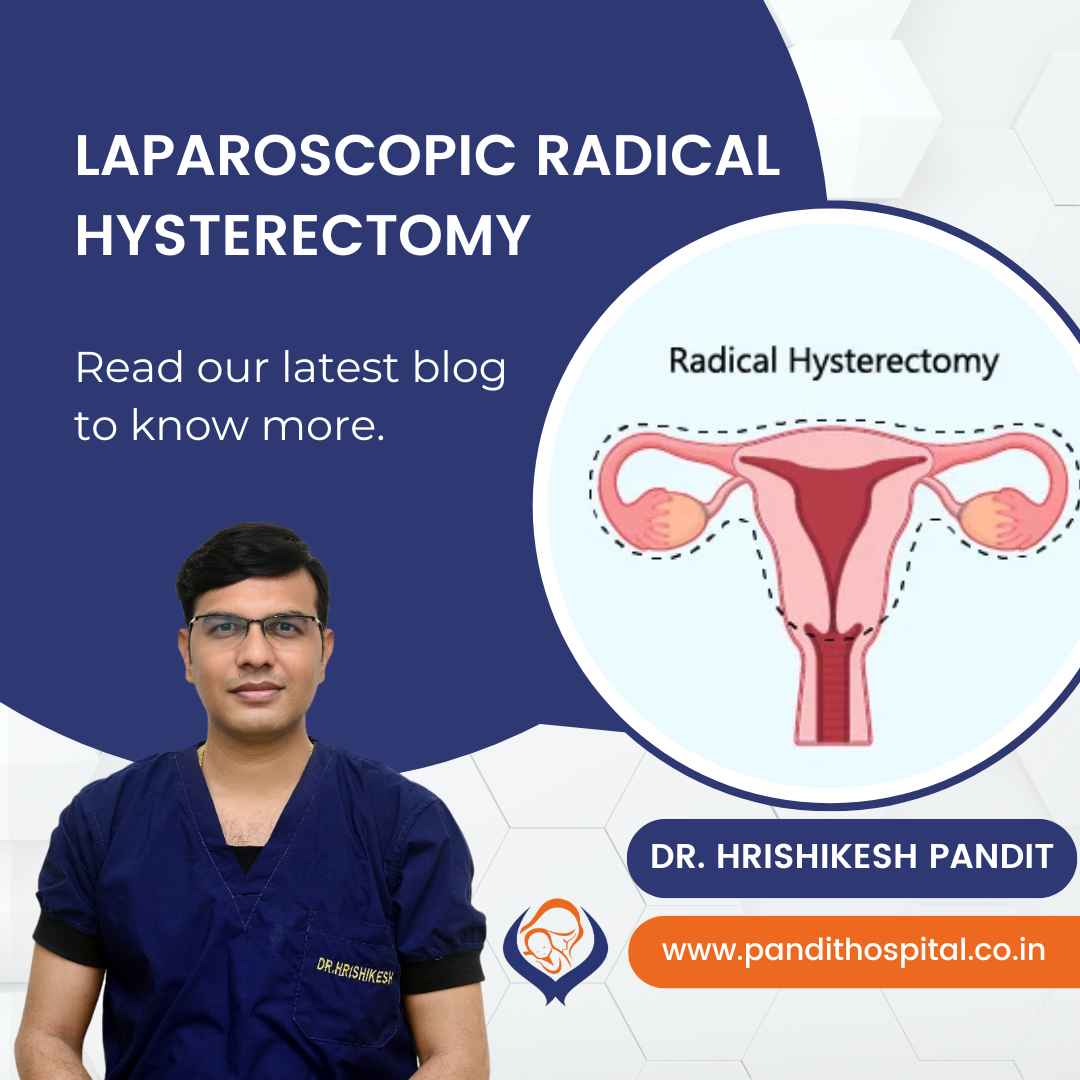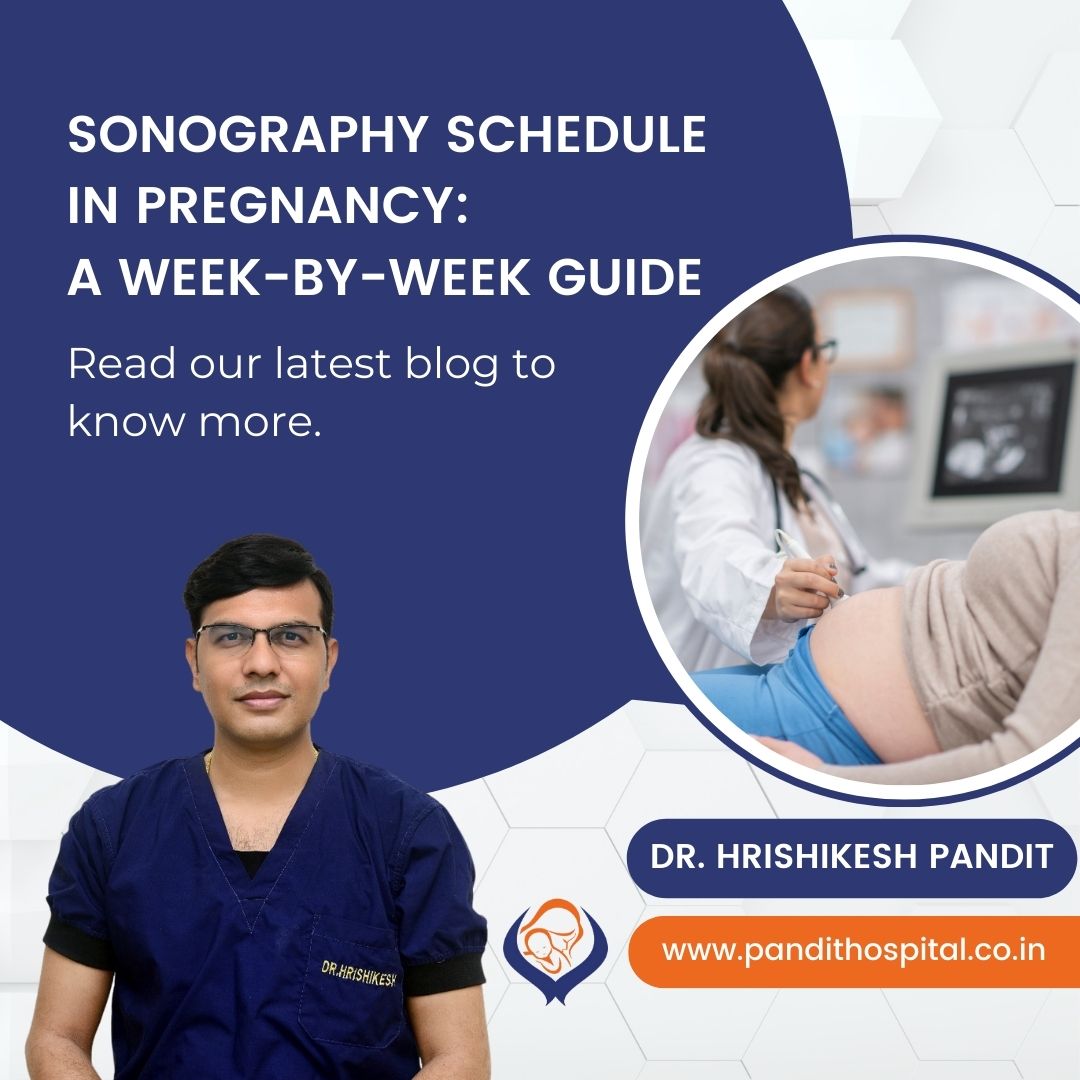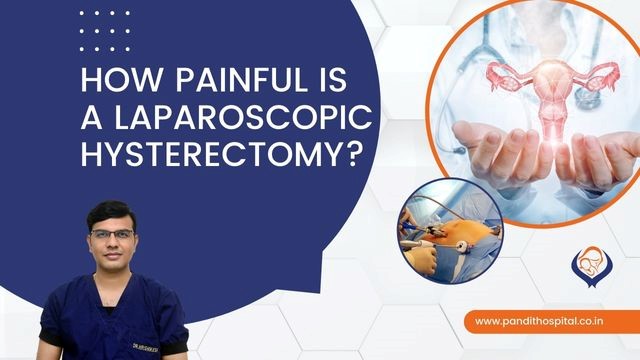
Hysterectomy (removal of uterus) is one of the most common major surgical procedures performed in women. Laparoscopic hysterectomy is the most preferred way of performing hysterectomy nowadays. As opposed to open hysterectomy, it is related with less postoperative discomfort and morbidity, as well as speedier recovery and a shorter hospital stay.
What are the types of hysterectomy?
- A partial hysterectomy, also known as supracervical hysterectomy, removes the uterus and leaves the cervix intact.
- A total hysterectomy removes the uterus and cervix. In certain cases, one or both ovaries and fallopian tubes may be removed. Removal of both ovaries can result in premature menopause.
- A radical hysterectomy removes the uterus, cervix and part of the vagina. The ovaries, fallopian tubes, and nearby lymph nodes may also be removed. This procedure may be necessary in certain cases of cancer.
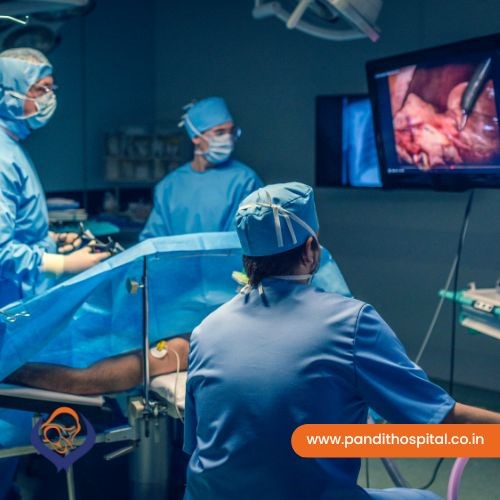
What are the techniques to perform hysterectomy?
- Open (abdominal) hysterectomy
- Vaginal hysterectomy
- Robotic hysterectomy
- Laparoscopy assisted vaginal hysterectomy
- Laparoscopic hysterectomy
Why is a Laparoscopic Hysterectomy better than an Open hysterectomy?
A laparoscopic hysterectomy is a minimally invasive surgical procedure to remove the uterus. A small incision is made in the belly button and a tiny camera is inserted. The surgeon watches the image from this camera on a TV screen and performs the operative procedure. Two or three other tiny incisions are made in the lower abdomen. Specialized instruments are inserted and used for the removal process.
What are the benefits of laparoscopic hysterectomy?
- Considerably less pain post-surgery.
- Minimum blood loss.
- Fewer complications
- Less scarring, as it requires only a few small incisions
- The stay at the hospital is shorter
- Faster return to normal day to day activities
- There is a decreased risk of infection
- Recovery period is 1-2 weeks, as compared to 4-6 weeks after an abdominal hysterectomy.
How painful is a laparoscopic hysterectomy?
As there are only 4-5 keyhole sized incisions made on abdomen, post-operative pain is minimal. Due to small size of incision, recovery is also better and faster.
When laparoscopic hysterectomy is required?
Numerous conditions, including cancer, uterine fibroids, abnormal uterine bleeding, and chronic pelvic inflammatory disease, may necessitate this procedure.
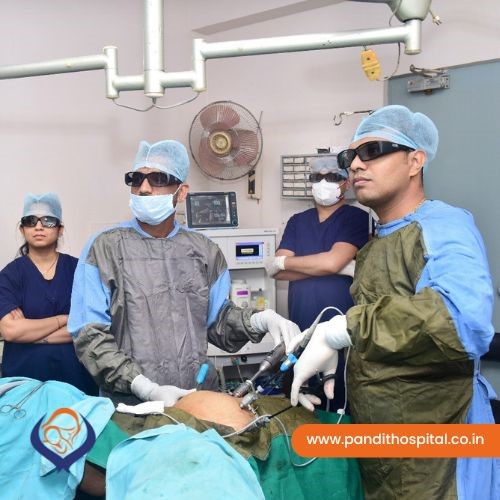
What type of anesthesia will be required in laparoscopic hysterectomy?
Patients are put to sleep under general anesthesia
What is the duration of hospital stay after laparoscopic hysterectomy?
The majority of our patients go home in couple of days after their surgery.
What are the risks or side effects or potential complications of laparoscopic hysterectomy (LH)?
- There is a very small chance of infection
- Blood clots may occur in the legs or lungs but chances are less than 1 in 250 women.
- Bleeding, but it is very uncommon during hysterectomy.
- There may be a risk of internal injury to bladder, ureters, bowel or blood vessels but it is less than 1 in 100 surgeries.
What can be expected during recovery phase after laparoscopic hysterectomy?
Patients should expect to take ibuprofen or narcotic pain pills for a few days post-operatively. We encourage patients NOT to stay in bed. They should move around the house and resume normal activities as soon as they feel up to it. Some women are well enough to return to work one week after surgery. Women who have more physically demanding work should stay home for 2-3 weeks. Women can resume exercise and sex within a few weeks of the surgery.
Where is 3D laparoscopy surgery center in Ahmednagar?
At Pandit Hospital, Dr. Hrishikesh Pandit has introduced the technique of 3d Laparoscopy in Ahmednagar. 3D laparoscopy technique is much superior than regular 2D laparoscopy. The 3D HD view with depth perception and tactile feedback makes laparoscopic surgery more acceptable, safe and cost-effective. It improves surgical precision and hand–eye coordination, all leading to better outcome for patient.
What is the cost of laparoscopic hysterectomy in Ahmednagar?
The final cost of any surgery may vary with many factors associated the underlying causes. At Pandit Hospital, we provide laparoscopic hysterectomy at around Thirty Thousand Rupees.
Dr. Hrishikesh Pandit is the pioneer pf 3D laparoscopy technique in Ahmednagar. His experience and skill makes him one of the best laparoscopic surgeon in India.
At Pandit Hospital, you are in safe hands!
To consult Dr. Hrishikesh Pandit, Click Below,
Pandit Hospital – Best Maternity care center in Ahmednagar
LET’S SEE OUR INTRO VIDEO
At Pandit Hospital, we provide all the maternity services from antenatal to postnatal period under one roof
Let's Connect!!
Nagar - Pathardi Road, Bhingar, Ahmednagar, Maharashtra, India 414002
0241-2441717 / 0241-2442344
info.pandithospital@gmail.com
About author:
Dr. Hrishikesh Pandit:
Dr. Hrishikesh Pandit is one of the best obstetrician and gynecologist in India. He is also a well-renowned Laparoscopic surgeon. He obtained his MS (Ob Gyn) degree from the prestigious Pravara Institute of Medical Sciences. He has also done fellowship and diploma courses in laparoscopic surgeries and cancer treatment from Tata Hospital and Keil University, Germany. His surgical cases, papers and videos has been chosen in many international forums of gynecology.

Why Pandit Hospital?
At Pandit Hospital, we are always working hard to provide its patients with the highest level of medical innovation and patient care. With the aim of delivering complete maternity & gynecological care under one roof with the help of all contemporary amenities and cutting-edge medical equipment. Dr. Hrishikesh Pandit has a vision to bring the best of facilities regarding laparoscopy surgeries in the city of Ahmednagar. He is the pioneer of 3D Laparoscopy technology is Ahmednagar.
Latest Articles
Dr. Hrishikesh Pandit is one of the best laparoscopy surgeons in India. His determination to bring 3D Laparoscopy technology to Ahmednagar has eventually helped so many patients. Read the latest articles by Dr. Hrishikesh Pandit on Gynecology, gastric issues, and health tips for mothers during pregnancy.
Dr. Hrishikesh Pandit answers common questions about Laparoscopic Radical Hysterectomy at Pandit Hospital’s 3D Laparoscopy Center.
Laparoscopic Cerclage is done for cervical insufficiency or early abortion history. Consult Dr. Hrishikesh Pandit to know more about it. Excellent results in High Risk Pregnancies. Watch video on YouTube.
At Pandit Hospital, Ahilyanagar, we provide advanced maternity care with state-of-the-art 3D laparoscopy and sonography services to ensure the safety of both mother and baby.
FAQ
You should consult a doctor during the first 6 to 8 weeks of your pregnancy, or when your period is 2 to 4 weeks late.
If your contractions are 5 minutes apart, lasting for 1 minute, for 1 hour or longer, it’s time to head to the hospital.
Doctors recommend an infertility evaluation if you have not gotten pregnant after 1 year of having regular sexual intercourse without using birth control. If you are older than 35, an evaluation is recommended after 6 months of trying.
Yes, You can. But most babies need 39 weeks to develop fully. Induced or planned delivery before that time—without a valid medical reason—is not in the best interest of the baby or the mother. After 39 weeks you can plan delivery.
Women who are 21 to 29 should have a Pap test alone every 3 years. HPV testing alone can be considered for women who are 25 to 29, but Pap tests are preferred. Women who are 30 to 65 have three options for testing. They can have a Pap test and an HPV test (co-testing) every 5 years. They can have a Pap test alone every 3 years. Or they can have HPV testing alone every 5 years.
Laparoscopic hysterectomy is a safe and suitable procedure for chosen patients. It affords patients advantages like less peri-operative morbidity, better life quality, shorter hospitalization time, and faster return to activity.
Schedule a doctor’s visit if you have: Greenish, yellowish, thick or cheesy vaginal discharge; Strong vaginal odor; Redness, itching, burning or irritation of your vagina or the area of skin that surrounds the vagina and urethra (vulva); Bleeding or spotting unrelated to your period.
Painless delivery can be achieved using a form of regional anesthesia that provides pain relief during natural labor. Epidural anesthesia is administered through an injection on the lower back of the mother. The drug takes about 10-15 minutes to take effect.
Even in severe cases of endometriosis, most can be treated with laparoscopic surgery. In laparoscopic surgery, your surgeon inserts a slender viewing instrument (laparoscope) through a small incision near your navel and inserts instruments to remove endometrial tissue through another small incision.
The HPV vaccine is recommended for routine vaccination at the age of 11 or 12 years. (Vaccination can be started at age 9.) It is also recommended that vaccination for everyone through age 26 years if not adequately vaccinated when younger. HPV vaccination is given as a series of either two or three doses, depending on age at initial vaccination.

